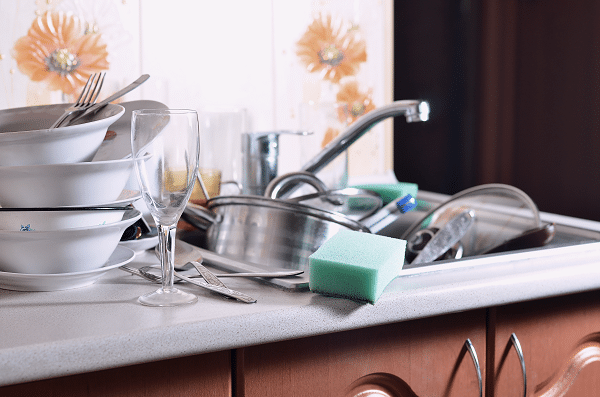An organized kitchen is the backbone of efficient cooking and enjoyable meal preparation. Yet, maintaining this level of organization can often seem like a herculean task, especially for those with busy schedules or smaller kitchen spaces. However, with a few strategic tips and techniques, it’s possible to transform any kitchen into an orderly, functional, and pleasant space. This blog post will delve into a variety of practical strategies designed to simplify the organization process, optimize kitchen space, and ultimately enhance your cooking experience. Whether you’re a seasoned chef or a novice cook, these tips can help streamline your kitchen routines and inspire your culinary creativity.
Contents
Why Organize Your Kitchen?

Kitchen organization is more than just a cosmetic enhancement—it’s a practical tool that facilitates smoother, less stressful meal preparation. A cluttered, disorganized kitchen can lead to wasted time spent searching for utensils, ingredients, or equipment. It can also contribute to the feeling of being overwhelmed, turning what could be a relaxing cooking session into a frantic and stressful experience. Conversely, an organized kitchen allows for easy access to all necessary items, making the cooking process more efficient and enjoyable. Therefore, it’s crucial to appreciate the importance of kitchen organization and strive to implement practical strategies to maintain it.
The impact of a disorganized kitchen can extend beyond mere inefficiency. It can result in frequent misplacement or even loss of items, necessitating replacements that increase costs over time. Furthermore, a cluttered environment may also lead to poor hygiene and food safety practices, as it can hinder effective cleaning and promote the spread of bacteria. Investing in kitchen organization, therefore, not only saves time and reduces stress but also contributes to a safer, healthier cooking environment.
Decluttering: The First Step

Before embarking on the journey to an organized kitchen, it’s essential to start with a thorough decluttering. Decluttering involves going through all items in the kitchen and deciding what is necessary and what is not. This step is often challenging, especially when it comes to parting with items that hold sentimental value or those ‘just in case’ items that have sat unused for months or even years. However, holding onto excess items only contributes to clutter and reduces the overall efficiency and functionality of the kitchen.
Once the decision has been made about what items to keep, it’s time to arrange them in a way that promotes accessibility and efficiency. Often, it’s best to group similar items together, such as baking utensils, pots and pans, or food storage containers. Additionally, consider the frequency of use when deciding where to store each item. Items used daily should be easily accessible, while rarely used items can be stored in less convenient spaces. By implementing this step, you’re already on your way to a more organized and functional kitchen.
Utilizing Cabinet And Drawer Space

Cabinets and drawers are invaluable components of any kitchen’s organization strategy. They provide ample storage and help keep countertops clutter-free. However, without careful planning, they can quickly become chaotic, hindering the kitchen’s overall functionality. A smart way to optimize these spaces is to use organizers and dividers. These tools can help categorize items, making it easier to locate what is needed at any given time.
Using the space efficiently also involves considering the size and shape of items. For example, stacking pots and pans within each other can help free up significant cabinet space. Similarly, storing items in their frequency of use order can make the cooking process smoother. Daily-use items should be kept at eye level or in easily accessible drawers, while lesser-used items can be stored higher up or towards the back of cabinets. By strategically using cabinets and drawers, it’s possible to significantly improve the kitchen’s functionality and organization.
Making Use Of Vertical Space

Vertical space is often overlooked in kitchen organization, yet it offers abundant storage possibilities. Walls, ceilings, and the sides of cabinets can be leveraged to store items that would otherwise take up valuable countertop or drawer space. Wall-mounted racks, for example, can hold pots, pans, or utensils, while magnetic knife strips can keep knives easily accessible yet out of harm’s way.
Another effective use of vertical space is installing shelves. Whether used to hold dishes, cookbooks, or decorative items, shelves can add both function and style to a kitchen. Additionally, items like hanging baskets or hooks can be attached to the ceiling or underneath cabinets to provide even more storage options. Effectively using vertical space can drastically increase a kitchen’s storage capacity and help maintain an organized, clutter-free environment.
Creating Zones In Your Kitchen

The concept of ‘zoning’ can play a crucial role in maintaining an organized and efficient kitchen. This involves designating specific areas for particular tasks, such as a baking zone, prep zone, and cleaning zone. By assigning each task its dedicated space, clutter can be contained, and the workflow can be significantly improved.
When creating zones, it’s important to consider both the type of tasks commonly performed and the layout of the kitchen. For instance, the baking zone could include the oven, baking sheets, mixing bowls, and ingredients, while the cleaning zone could incorporate the sink, dishwasher, and cleaning supplies. Each zone should be set up so that all necessary items are within easy reach, reducing the need to move around the kitchen excessively. This strategic setup can streamline cooking processes and make the kitchen a more enjoyable and productive space.
Maintaining Your Organized Kitchen

After working hard to declutter and organize the kitchen, it’s crucial to maintain this level of organization. Regular decluttering, even if just once every few months, can help keep excess items from accumulating and ensure that everything still has its designated place. Moreover, constant evaluation of storage methods can highlight what’s working and what might need to be adjusted, ensuring the system stays effective and practical.
Habit development plays a significant role in maintaining kitchen organization. For instance, always returning items to their designated place immediately after use can prevent clutter from building up. Additionally, regular cleaning – both daily quick cleans and deeper, less frequent cleans – can keep the kitchen both looking and functioning its best. Therefore, long-term kitchen organization relies not only on an effective initial setup but also on the development and maintenance of these beneficial habits.
The Bottom Line
Organizing a kitchen might seem like a daunting task, but with the right strategies and a little effort, it’s entirely achievable. Implementing these tips can transform even the most chaotic kitchen into a space of efficiency, cleanliness, and enjoyment. Whether it’s maximizing cabinet and drawer space, making effective use of vertical space, or adopting a “clean as you go” policy, each strategy contributes to an organized kitchen that facilitates and enhances the cooking process. With the kitchen at the heart of the home, taking the time to organize it is a valuable investment that can offer numerous returns.



